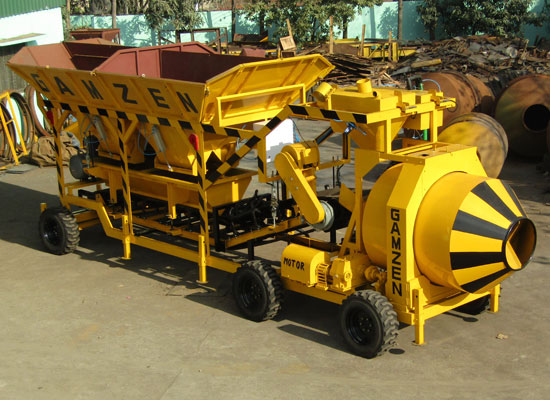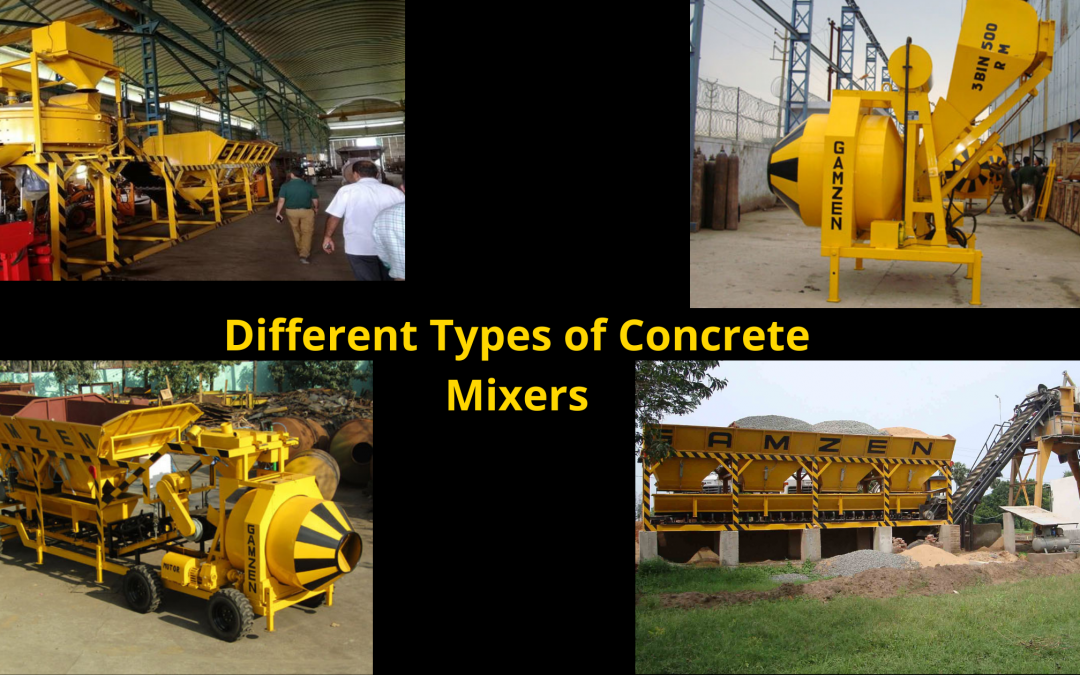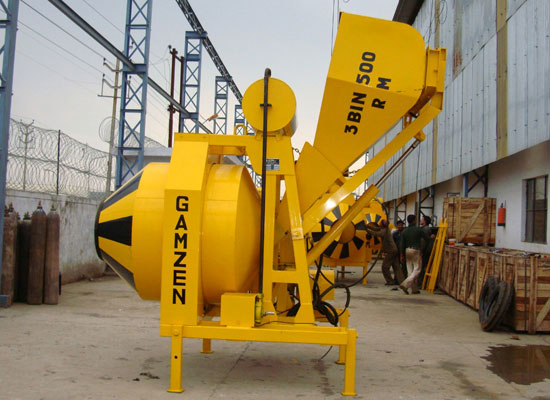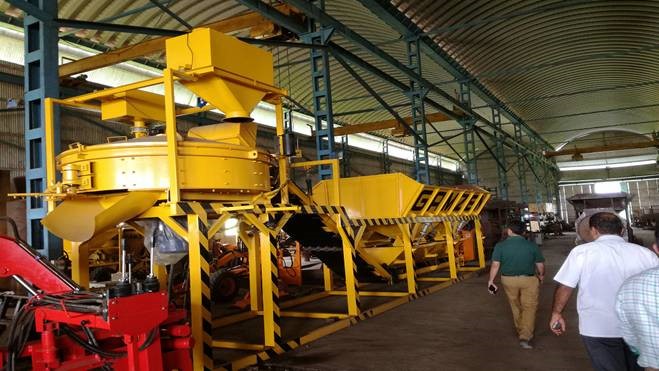A concrete mixer as the name suggests is a machine that forms concrete by mixing cement, aggregates (cement or gravel), and water. Concrete mixers are mostly used on construction sites so that the workers get enough time to use them before the concrete hardens or forms lumps. The use of these machines saves much time and labor and thus increases output and reduces expenses. These mixers are increasingly replacing the traditional method of mixing cement by hand which is a time-consuming and low-productive process.
Types of Concrete Mixers
Concrete mixers can be divided into two types. These are:
A. Batch Mixers
B. Continuous Mixers
Let us look into these concrete mixers one by one
A. Batch mixers
Batch mixers are mostly used in small and medium-sized construction sites. Parts of a concrete mixer of this variety consist of drums or a pan having rotating blades that prepare the concrete mix. Batch mixers prepare concrete mix through a batch at a time, hence the name. Each batch can be adjusted for the required mix separately and thus fine-tune the mixing process. These mixers can also execute multiple mixing processes where a portion of the ingredients can be mixed before adding other ingredients. Batch mixers are of 2 types, Drum and Pan. These are discussed in detail below.
1. Drum Type Concrete Mixers

Drum Type Batching Plant
These mixers have a drum in the shape of a cone with the top cut off. This figure is technically called a double conical frustum shape. Depending on the type these drums may consist of either a single or multiple set of swing blades connected to a paddle. These blades curve in different directions. This swing blade paddle is used for mixing and preparing the concrete and ultimately discharging it for construction use. Based on different uses and applications, these mixers can be further classified into 3 different types.
-
Tilting Drum mixer
This type of concrete mixer machine discharges concrete by tilting the drum downwards. A tilt drum mixer is used to mix plastic and semi-dry concrete. These mixers can also prepare low workable concretes having large-sized aggregates. The efficiency of these mixtures depends on the following factors; the shape of the drum, size of the drum, size of the blades, and the angle of the blades. Tilt drum mixers are generally used in large construction sites where intense construction work is required. For eg. road and bridge construction and water and electricity generation construction projects.
-
Non-Tilting Drum mixer
As the name implies, the drums of these types of concrete mixers do not tilt but rotate on their horizontal axis. These mixers have openings at both ends. The ingredients are fed from one end and the produced concrete mix is collected from the other end. The discharged mix is collected by attaching a chute to the opening of the drum in an inclined position. The blades in these machines are also utilized during the extraction of the mix. As larger size aggregates are not discharged easily and the discharge of concrete is slower, therefore, these types of mixers are generally used in small construction projects.
-
Reversing Drum Mixer
These concrete mixers are similar to non-tilting type mixers in shape. As with the above type, these mixers have openings at both ends. The ingredients for the concrete mix are fed from one end and the produced mix is collected from the other end and the drum rotates on its horizontal axis. The difference is that here the reversal of rotation is done for performing separate actions. The drum rotates in one direction for mixing and in the opposite direction for discharging the mix. Two separate sets of blades are used for mixing and discharging. These mixers are mostly used for dry concrete mixes.
2. Pan Type Concrete Mixers
The second type of batch mixer is called pan-type concrete mixers. These mixers have a circular pan instead of the drum to mix concrete. The ingredients are mixed by blades arranged in a star shape pattern inside the pan. These rotating blades also have special blades called scrapper blades in turn. Scrapper blades will scrape the concrete from the pan so it won’t be stuck in the pan.
Pan type mixers can also be divided into 2 types. These types are classified on the movement of different parts of a concrete mixer. In the first type, the circular pan is stationary and only star-shaped blades rotate at the vertical axis to the pan. In the second type, the pan itself rotates while the blades are in the static position. Both of these mixers are efficient and in both the concrete mixture is discharged and collected through a central hole in the pan itself. Pan-type mixers are considered more efficient than other batch mixers.
B. Continuous Concrete mixers
This type of concrete mixer machine continuously loads, mixes, and discharges the mix until the work is finished or a break happens. Here, the materials are loaded continuously through screw feeders. This is an automated process without the manual need for refilling or removal. This type of mixing is faster and requires fewer workers to operate. These mixers are used in large projects where speed and efficiency matter like big real estate projects and construction of dams etc.
Conclusion
So, this was a brief description of different types of concrete mixers used in the construction industry. Different types of mixers are selected for use in projects depending on the type of aggregates, quality of the concrete required, and the project cost.



